Review - Tearaway
Heralded by many as the last great hope for Sony’s ailing Playstation Vita handheld, Tearaway has a lot riding on it. Media Molecule’s latest is certainly bright and colorful, with plenty of personality; as you might expect from the makers of LittleBigPlanet, it’s certainly fun and almost guaranteed to make you smile.
But it’s not perfect.
At the start of the game, you’re given a choice of who to play as: the male Iota, or the female Atoa. Both are envelopes that have grown a face and body and are now desperately trying to hurl themselves out of the gameworld, through the sun and into our world. The player, known as “the You”, forms the second protagonist and you spend the length of the game with your face floating inside the sun, as captured constantly by the Vita’s front camera. Every time that Tearaway fancies breaking the Fourth Wall and reminding you that you are playing a game, the camera cuts to the sun so can you see your gormless face sitting there like an aged Tellytubby. For some, this simple gimmick will be enough to make them smile; others may find it entirely off-putting. Personally, I fell very much in the latter camp.
The aim is to work as a team to get your little letter from the game world into the real world, through directly controlling his or her actions. To help you with this, you can directly influence the game world by touching the back touch panel, poking your finger through the ground to move objects or kill enemies – scraps of newspaper known imaginatively as Scraps - or by squashing them from above using the Vita’s OLED touchscreen. For a game centered around this dual-player mechanic, I really wish that Media Molecule had made better use of it. Of the five varieties of Scraps, only one can be killed from above by your thumb. You can’t even stun the rest.
The Scraps have run through the world, sucking the color out of it. Certain objects and NPCs are left as a simple white silhouette that you need to photograph to restore their color. It’s convenient that the game wrestles the camera away from you often enough that you are forced to use the camera to see where you are going, because this is how I found most of the silhouettes. I’ll put aside the fact that this makes no sense whatsoever, because in return for your photography, you get the papercraft (also known as pepakura) designs for the thing you just shot as an internet download. It’s a neat addition and easily one of my favorite aspects.
Other collectables include collecting presents which as far as I can tell just drop 100 pieces of confetti – a form of in-game currency. Confetti is used to unlock extra lenses and filters for your camera, and prefabricated items for character customization. I spent most of the game with more confetti than I knew what to do with, which takes the thrill out of finding these collectables. When opening presents fills you with apathy and thousands of pieces of useless confetti, you know something has gone wrong.
Throughout the game’s story, events are frequently narrated by two God-like creatures. It feels as though the Knight from Trine sat down with the Voodoo Lady from Monkey Island to tell a story. As a result, they not only set you on your path but actively interfere when the story gets too contrived and boring.
At about 5-7 hours long - depending on how much you like to explore - Tearaway isn’t a particularly long game, but large sections of it irritate rather than delight. Between hours 2 and 4, the player loses the ability to kill enemies by poking our fingers through the ground - one of the game’s most exciting use of the touch screen. Instead, your fingers are used only to move objects to clear a path for the messenger. It feels vaguely reminiscent of LittleBigPlanet on the Vita, but I don’t remember that game being this fiddly or unresponsive. I often found myself wrestling with the screen to move one specific piece of paper without throwing the rest of my carefully set pieces out of place.
Character customization works pretty much like you would expect from the makers of LittleBigPlanet, with a variety of costume options. The amusing new addition is that you can design your own additions to your costume using the OLED touchscreen. If you want to add, say a pair of mittens, or a new set of eyes, you grab some paper and start drawing. This mechanic is also used in the game in side missions where a NPC asks you to make, for example a pumpkin or a snowflake. Unfortunately for me and my fat fingers, this feature lacks the fidelity I had hoped for, and I gave up, handing the NPC a square of orange and green paper respectively. Thankfully, the NPC did not berate me for it, because if they had then I think I would have responded by hurling the console at the nearest wall.
Events move slowly, especially at the start. For me, this is where Tearaway falls down the hardest. At the start, none of your face buttons are functional. After about 15 minutes you unlock the use of the triangle button, granting you the ability to take photos. Eventually you’ll unlock other abilities like the jump button, or lifting things with your arms. Now, I’m no stranger to the idea of games treating the player like a power-slave, but the idea of being forced to spend the first two hours of any game without a jump button makes my skin crawl. Some games make you wait for abilities – Portal 2 made you wait for a few minutes before you can jump, purely to squeeze a punchline into the script. Arkham City made you wait to unlock certain gadgets in order to pace the game. Both made sense within the context of the game, but when Tearaway tries to explain this away by saying that suddenly the You wants the messenger to jump, so suddenly you can. I already wanted to jump, or even just bloody pick stuff up from the start – the game just wouldn’t let me. It smacks of lazy design and a poor attempt to force the player to go back and replay levels with legs that work. It’s this sort of poor design choice where the game feels about as hollow and flimsy as a house of cards.
My final point of contention is the soundtrack. When non-living NPCs such as a tree or a boulder speak to you, it sounds like paper rustling. Sadly when the living NPCs talk, it is only intelligible through the use of irritatingly stop-start subtitles. At first I thought my game was lagging; but no, this was an actual design choice. Worst of all, the backing music is at it’s best when it’s not there at all. Wind-rustled paper sounds good when traversing a plane of wind-rustled paper. When I was moving through the world and the triumphant sound of what can only be described as a four-year-old stomping through the house playing his kazoo started up, I reached for the mute button.
At the end of the day, Tearaway is not a terrible game, it just tries far too hard to be a Vita exclusive. It even uses the microphone for no real reason. Yes, the music is mind-numbingly bad and you’d need to pay me to listen to it again. Yes, the combat is boring at best, but to carry on berating it feels like repeatedly kicking a puppy - it may be an easy target, but you know you’ll feel bad afterwards. It may not be the best game that money can buy, but it has a lot of cute gameplay. If anything it tries too hard to be liked; as a result its flaws are easier to see.
Ultimately, Tearaway is a cute little romp with the potential to throw you back to the days when you were a little kid. Incidentally, it feels like it’s best enjoyed with your child in tow, more than anything else. Don’t expect it to be ground-breaking in any way and you’ll probably enjoy it enough to come away from it with some level of satisfaction.
I expected great things from Tearaway. Unfortunately, my expectations were far too high; there are just too many areas where it falls down. The end result is that while it’s certainly fun and full of ideas, Tearaway ultimately ends up feeling paper-thin.
____________________________________________________________________
6/10
Version Tested: Playstation Vita (Exclusive)
Out: Now
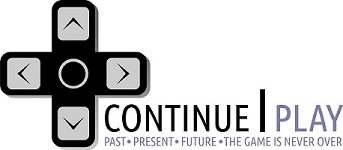
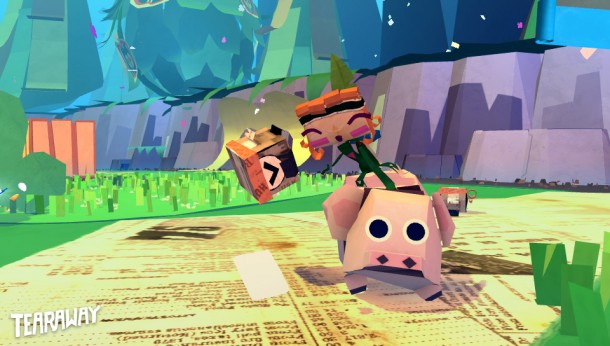
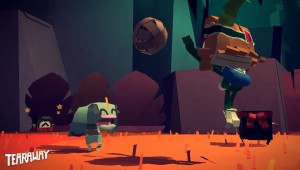
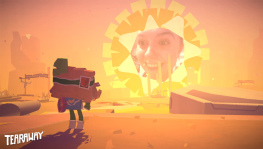
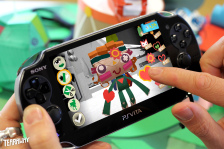
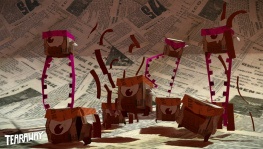
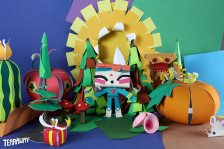
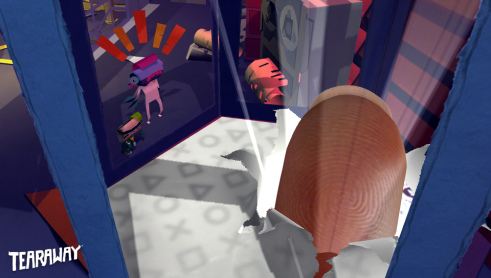
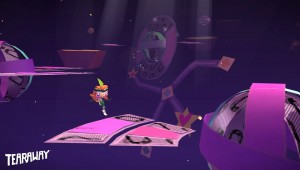




You must log in to post a comment.